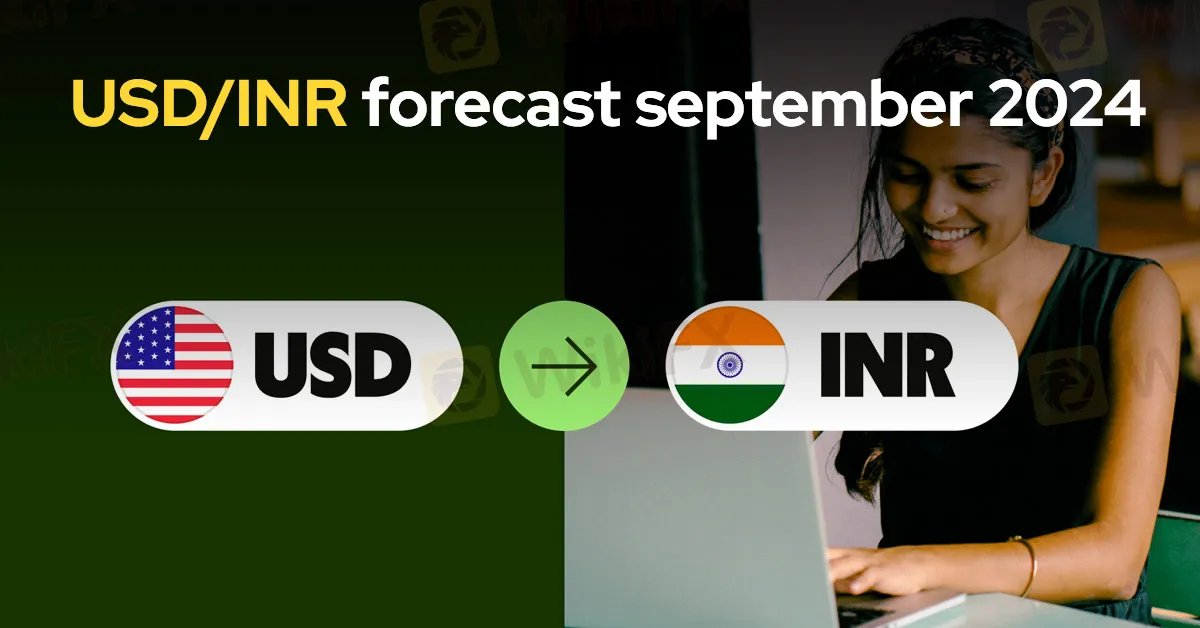简体中文
繁體中文
English
Pусский
日本語
ภาษาไทย
Tiếng Việt
Bahasa Indonesia
Español
हिन्दी
Filippiiniläinen
Français
Deutsch
Português
Türkçe
한국어
العربية
USD/INR Monthly Forecast: September 2024
Abstract:The USD/INR currency pair has exhibited significant volatility, staying near the higher end of its long-term price range. Since early March, the pair has consistently set new peaks and ventured into higher-price territories.

According to report, the USD/INR currency pair has exhibited significant volatility, staying near the higher end of its long-term price range. Since early March, the pair has consistently set new peaks and ventured into higher-price territories. On August 5th, the USD/INR briefly surged above the 84.1000 mark, driven by exaggerated reactions in the Asian markets to USD/JPY fluctuations and a selloff in Japan's Nikkei index. However, market stability quickly returned, and the pair settled back to more familiar values within a day.
Interestingly, after the rapid August 5th spike, the USD/INR did not revert to its previous price levels. Instead, the 83.7700 area lost its support, and the 83.8600 zone began to provide new support. This change persisted until around August 16th, when the pair tested slightly lower values. A notable low of 83.6820 was recorded on August 20th before it swiftly rebounded.
Mid-August Lows and Market Reactions
The mid-August low may have led some traders to speculate that the Reserve Bank of India (RBI) might soon alter its policies to strengthen the Indian Rupee. However, this did not materialize. Despite broader forex market trends showing USD weakness, the USD/INR has maintained its elevated price range. This behavior suggests that the RBI might be tolerating higher levels in the USD/INR, possibly to test market reactions or manage inflationary pressures.
Outlook for September
The persistence of the USD/INR near the 83.9000 level indicates more than just random fluctuations. It reflects a strategic stance by the RBI, potentially hinting at a higher price range tolerance for the pair. The Indian government may be balancing the benefits of a weaker Rupee—such as boosting export demand—with the inflationary consequences it brings. As September approaches, it remains to be seen whether the USD/INR will continue to test resistance levels or if the Indian government will take action to address the currency's strength.

Disclaimer:
The views in this article only represent the author's personal views, and do not constitute investment advice on this platform. This platform does not guarantee the accuracy, completeness and timeliness of the information in the article, and will not be liable for any loss caused by the use of or reliance on the information in the article.
Read more

Coinbase Under Scrutiny Amid Wrapped Bitcoin Delisting Controversy
Coinbase has come under fire after announcing its decision to delist Wrapped Bitcoin (wBTC), a move critics claim could be driven by competitive interests. The delisting, set to take effect on 19 December, has sparked allegations of market manipulation and concerns about fairness in the cryptocurrency ecosystem.

Solana Soars to All-Time High, Hits $264 on Coinbase
Solana hits $264 on Coinbase, breaking its 3-year high with an 11% daily surge. Learn what’s driving SOL's meteoric rise and the crypto market rally.

Bitcoin Nears $100,000: A Triumph of Optimism or a Warning Sign?
Bitcoin’s meteoric rise continues to capture global attention as its price recently surpassed the $99,000 mark, briefly approaching the $100,000 milestone. This unprecedented rally has led market sentiment to reach a state of “extreme greed,” according to the Fear and Greed Index. Analysts suggest that the market may be entering overheated territory, raising questions about sustainability amidst ongoing enthusiasm.

FCA Alerts Traders to New List of Unregulated and Clone Brokers
Protect your investments! Learn about unregulated firms flagged by the FCA and discover how WikiFX helps traders avoid scams and choose legitimate brokers.
WikiFX Broker
Latest News
Webull Partners with Coinbase to Offer Crypto Futures
eToro Expands Nationwide Access with New York Launch
Why Is UK Inflation Rising Again Despite Recent Lows?
Hackers Charged for $11M Crypto Theft Using SIM-Swaps
Role of Central Banks in the FX Market
FCA Alerts Against Sydney FX
What Makes Cross-Border Payments Easier Than Ever?
Trader Exposes Unethical Practices by STP Trading
Interactive Brokers Launches Tax-Friendly PEA Accounts in France
Google Warns of New Deepfake Scams and Crypto Fraud
Currency Calculator


